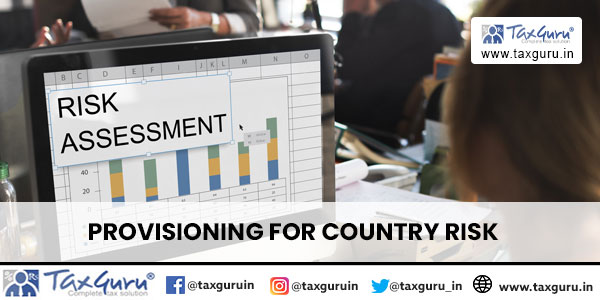1. Country Risk: Country risk refers to the potential financial losses or uncertainties that banks face due to factors related to a specific country where they operate or have exposure. These risks can arise from various political, economic, social, and legal factors inherent to the country.
2. Scope: Banks should reckon both funded and non-funded exposures from their domestic as well as foreign branches while identifying, measuring, monitoring and controlling country risks. In the case of foreign banks operating in India, the scope would be confined to their branches in India. An illustrative list of funded and non-funded exposures is furnished below:
| Funded Exposures | Non Funded Exposures |
|
|
- Banks should take into account indirect country risk.
For example, exposures to a domestic commercial borrower with a large economic dependence on a certain country may be considered as subject to indirect country risk. Indirect exposures may be calculate at 50 % of the exposure for the purpose of these guidelines. For the present, only in respect of the country, where a bank’s net funded exposure is 1 per cent or more of its total assets, the bank is required to reckon indirect country risk for measuring, monitoring and controlling with that country risk.

- Exposures should be computed on a net basis i.e., gross exposure ‘minus’ collaterals, guarantees, insurance etc.
3. Provisioning / Capital requirement:
- Banks shall make provisions, with effect from the year ending March 31, 2003, on the net funded country exposures on a graded scale ranging from 0.25 to 100 percent according to the risk categories mentioned below. To begin with, banks shall make provisions as per the following schedule:
| Risk category* | ECGC Classification* | Provisioning Requirement (per cent) |
| Insignificant | A1 | 0.25 |
| Low | A2 | 0.25 |
| Moderate | B1 | 5 |
| High | B2 | 20 |
| Very high | C1 | 25 |
| Restricted | C2 | 100 |
| Off-credit | D | 100 |
- Banks are required to make provision for country risk in respect of a country where a bank’s net funded exposure is 1 per cent or more of its total assets, the bank is required to make provision for dealing with that country risk exposure.
- The provision for country risk shall be in addition to the provisions required to be held according to the asset classification status of the asset. However, in the case of ‘loss assets’ and ‘doubtful assets’, provision held, including provision held for country risk, shall not exceed 100% of the outstanding.
- Banks may not make any provision for ‘home country’ exposures i.e. exposure to India. The exposures of foreign branches of Indian banks to the host country should be included. Foreign banks shall compute the country exposures of their Indian branches and shall hold appropriate provisions in their Indian books. However, their exposures to India will be excluded.
- Banks may make a lower level of provisioning (say 25% of the requirement) in respect of short-term exposures (i.e. exposures with contractual maturity of less than 180 days).
- Banks may use the seven category classification followed by Export Credit Guarantee Corporation of India Ltd. (ECGC) for the purpose of classification and making provisions for country risk exposures. ECGC shall provide to banks, on request, quarterly updates of their country classifications and shall also inform all banks in case of any sudden major changes in country classification in the interim period.
4. Disclosures:
1. Banks should disclose as a part of the ‘Notes on Accounts’ to the Balance Sheet as on 31st March each year,
a) The risk category-wise country exposures, and
b) The extent of aggregate provisions held there against.
2. The Statutory Auditors should look into and comment on the country risk exposures and the adequacy of provisions held.
5. Reporting: Banks should report details of their country-wise exposures to the RBI as a part of their DSB returns along with the details of the provisions held therefor.
6. Review: These guidelines shall be reviewed after one year, taking into account the experience of banks in implementing the guidelines.
7. Conclusion: Country risk involves financial uncertainties due to several factors in specific countries where banks operate. Banks must manage both funded and non-funded exposures especially when net funded exposure exceeds 1% of total assets.
Provisions for country risk should follow the ECGC classification system, in addition to those for asset classification, but not exceeding 100% for loss or doubtful assets. Exposures to the home country (India) require no provisions, though foreign branch exposures must be included.
Banks must disclose country risk exposures and provisions in the ‘Notes on Accounts’ to the Balance Sheet. Auditors should assess the adequacy of these provisions. Banks must also report country-wise exposures and provisions to the RBI and review the guidelines annually.
****
Authors: Parth Rathi, Article Assistant | Mohit Gurjar, Senior Manager | Email: blogs@bilimoriamehta.com





